In times of war, information is a weapon. Getting it, however, is only the first step. During the occupation, it was equally difficult to transfer it to the headquarters in London. Polish intelligence came up with a crazy idea of getting through half of a war-torn Europe.
The shortest route between the grounds and the headquarters was through the ether. But the radio did not send sketches or photos, and they were usually clou report. Another way had to be found.
The head of the Home Army intelligence, Colonel Marian Edward Drobik, made a tempting offer. It was the mapping out for couriers of a transit route through occupied Europe to Great Britain. Kazimierz Leski, pseudonym "Bradl", engineer, agent of the mysterious group of Musketeers, and later the Home Army, immediately decided that the game was worth the risk:
[...] I know Western Europe quite well, [...] linguistically I won't have any difficulties, [...] I could probably try to pave the route through Germany to France. […] The task was clear .
This is how cell code 666 was born.
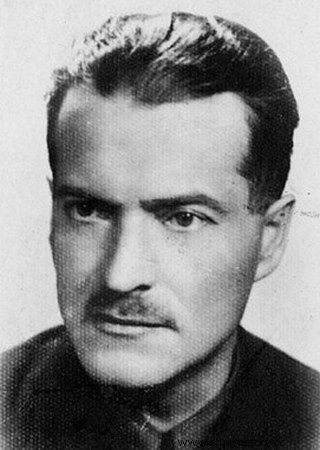
Marian Drobik. Head of the Home Army intelligence service (source:public domain).
Counterfeit "fuel" for the intelligence
The complete set of documents was prepared by the "198" Legalization and Technology department, only called Agaton a long time later - under this code name it was to go down in history. He mainly dealt with the preparation of all kinds of documents. ID cards, passes, ID cards and many other papers needed in the conspiracy.
Just as the lack of gasoline immobilizes the best car, the lack of false documents would disable the most efficient intelligence network - explained Stanisław Jankowski, cichociemny, "Agaton" - head of legalization.
To travel through Western Europe, Leski needed German, French and Spanish documents. Each one had to be made from authentic patterns. These had to be obtained.
Benedictine job
All means were dealt with, theft was one of many. What mattered was the result. Experts were engaged for this work, i.e. pickpockets famous for the entire pre-war Warsaw .
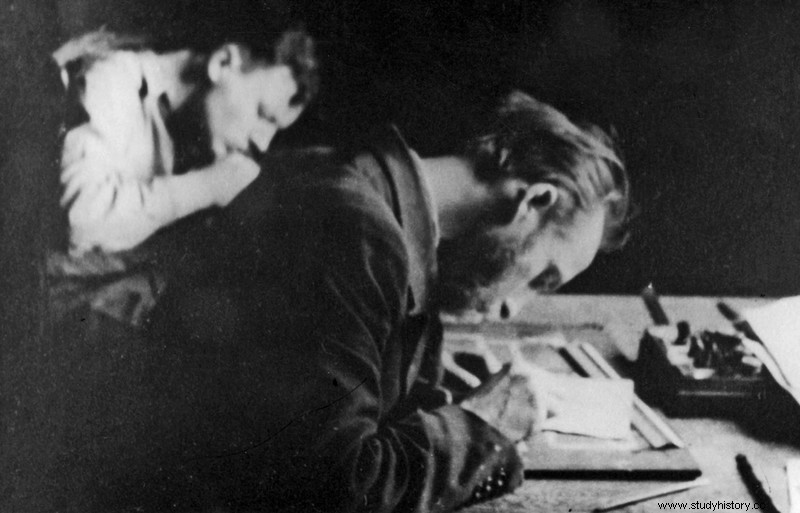
The Home Army legalization facility at 8 Ogińskiego Street, a place of forging documents. Romuald Warakomski "Hilary" at the removal of the seal. In the background Zdzisław Pleskaczewski "Zbyszek" when retouching photos. The photo and the caption come from the "Wielka Księga Armii Krajowej" (Znak Horyzont 2015).
Over time, an archive was created in which, apart from the models, all information concerning the details characteristic of the documents was recorded. This is how Stanisław Jankowski wrote about it in his memoirs published many years later:
We received, for example, from Wd 69 [Security and Counterintelligence Department] information that Germany, when examining the authenticity of documents from the Reich, peels off photos and checks company stamps of photo shops on the back .
Attention to detail was the most important commandment in legalization:it determined the agent's life. The control of the reverse of the photo forced the legalization to do additional work. An important new detail is woven into the conglomerate of other features necessary for copying.
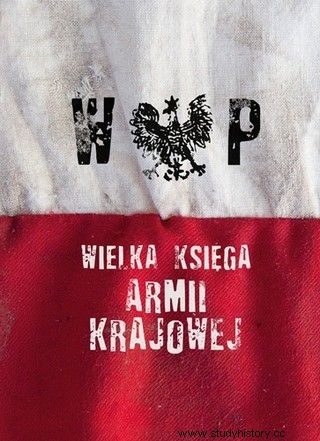
You can read even more about the successes of the Home Army intelligence in the chapter by Kacper Śledziński, who wrote for the 'Wielka Księga Armii Krajowej' (Znak Horyzont 2015). You will also find texts by other journalists of "Historical Curiosities".
The quality of the paper (if possible, the original prints were obtained), the paint of the stamps, security marks, signatures - here it was necessary to pay attention not only to the handwriting, but also to the type of ink. We needed typewriters with different fonts, stamps, stamp ink, numberers, date stamps, stamp stamps .
How to become a general
One day, in an underground facility, Kazimierz Leski received an Ostbahn official's ID card. The first voyage out of the way revealed complications that had not previously been realized. Bradl found that the Ostbahn ID card near Paris arouses interest .
The conclusions from the educational journey came down to the following conclusions: during the war, the least suspicions about traveling in any area [...] can be aroused by the main actors of the war scenes - the military . It quickly turned out that the degree of credibility is directly proportional to the rank of the officer.
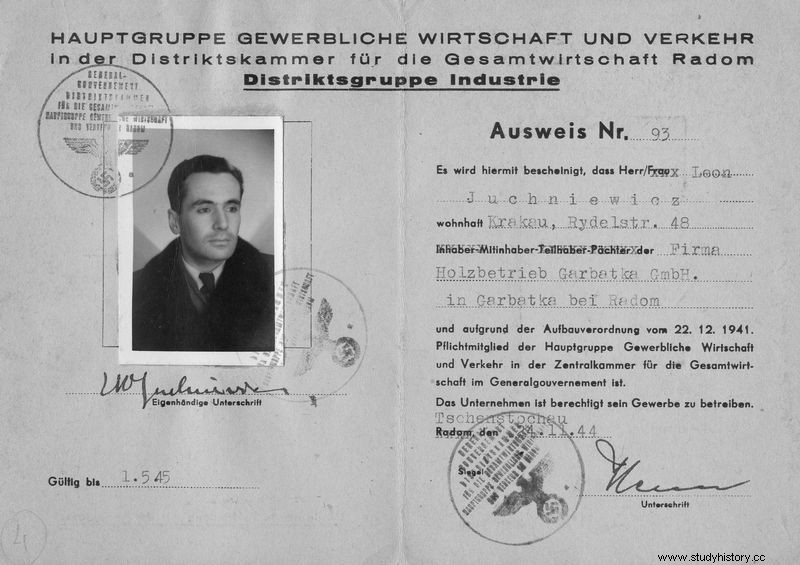
A false ausweis by Kazimierz Leski issued by the "Agaton" Department. The photo and the caption come from the "Wielka Księga Armii Krajowej" (Znak Horyzont 2015).
Julius von Hallmann General Bevollmächtigter für Verkehrs- und Festungswesen der Süd-Ost Front Ukraine boarded the train at the main station in Warsaw and sat down comfortably in the armchair. A few minutes later, he felt the car gently move away.
The journey was long, but the conditions met the expectations of the general, played by Kazimierz Leski. The high rank ensured him not only a seat - previously as a lieutenant he had to stand in the corridor - but also the trust of the Germans.
Of course, putting on the general's uniform brought with it certain conditions. First, the "disguise" had to use German with a perfect accent . Second, the uniform had to be original. But this was also sorted out. A tailor, a Pole who sewed uniforms to order from the Wehrmacht, did not refuse the requests of the Polish underground. Kazimierz Leski's few visits to his workshop resulted in a tailor-made elegant uniform.
Better than the original
The introduction of General von Hallmann on the European stage (in fact, no one like that existed) resulted in Agaton's obligation to prepare additional documents, theoretically less important, but in practice equally important. The general's wallet showed a driving license and even a hunting card . Moreover, Leski was provided with food stamps.
A certain event testifies to the quality of the latter. Well, while standing in the queue to exchange food stamps, Leski heard that a certain officer was pointed out that he had the wrong cards. Before Bradl could leave the queue:
a hand slipped out of the window, grabbed my stamps and held it under his eyes. And then I heard:"Look, these are the right stamps. They should be yours. And that was perhaps the greatest compliment one could say to Agaton and his colleagues .
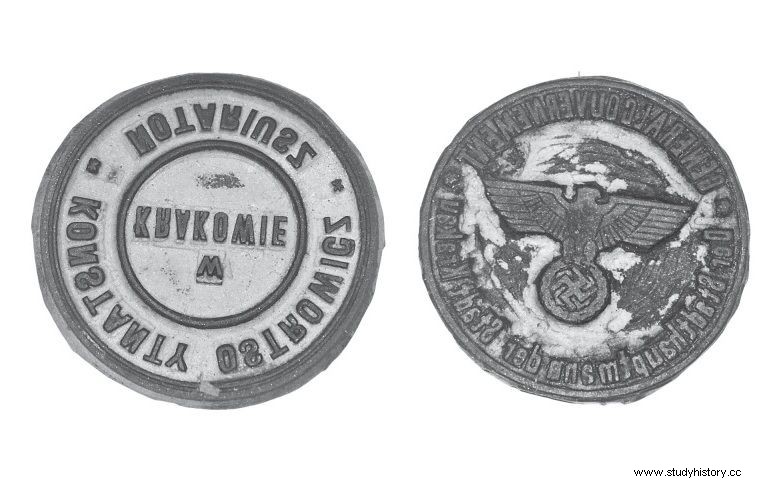
Stamps of the legalization cell. These types of seals were applied to false documents in order to give them authenticity. They come from a legalization package found in 2003 in Kraków's Wolski Forest. The photo and the caption come from the "Wielka Księga Armii Krajowej" (Znak Horyzont 2015).
Cell 666 was Leski's personal asylum for a short time. Soon three more people joined "Bradr":"Jan" - that is Tadeusz Jabłoński, "Żaryn" - Tadeusz Zieleniewski and "Wilski" - captain Aleksander Stpiczyński.
Helpful French and Basques
Getting to France turned out to be relatively easy. Of course, with the proviso that the preparations for the road involved a large group of people and required Benedictine work. Leski, disguised as a general, reported his arrival at the Stadtkommandantur, where he was assigned to a hotel and exchanged food coupons for those applicable in Paris. Of course, the Third Reich paid for the stay in the city.
In crossing the border with the so-called Zône libre, that is, an unoccupied part of France, the German uniform turned out to be useless. This time, falsified French and Spanish documents were irreplaceable. During the first attempt to travel to Vichy, the appropriate papers had to be purchased. Later, the legalization team made fakes on the basis of them.
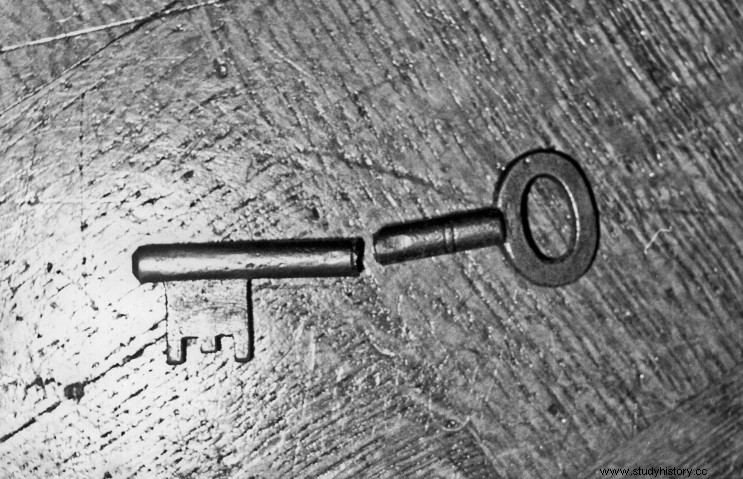
The Home Army couriers' box is used to carry secret documents across the border. The photo and the caption come from the "Wielka Księga Armii Krajowej" (Znak Horyzont 2015).
The cooperation with the French resistance movement, operating on the basis of full symbiosis, also turned out to be helpful. Requests by the French for Agaton to prepare documents were not uncommon . Nevertheless, when the formal side failed and it was necessary to cross the border in secret, French railwaymen, the mobile Résistance faction, came to the rescue. .
Even more troubles were breaking through the border with Spain. The entry into the country of a silent ally of the Third Reich should not be a problem for Poles disguised as German officers.
However, before they made this attempt, the conducted research revealed the custom of reporting by institutions of personal lists of their representatives leaving for Spain. So there was a road through the Pyrenees, difficult mountain trails, with a Basque guide.

You can read even more about the successes of the Home Army intelligence in the chapter by Kacper Śledziński, who wrote for the 'Wielka Księga Armii Krajowej' (Znak Horyzont 2015). You will also find texts by other journalists of "Historical Curiosities".
The Spanish destination appeared on the route of the couriers out of force. It was a roundabout but relatively sure path to Britain. It was not until 1943 that it was possible to transport by plane from occupied France to Great Britain.
In the following year, this form of travel was used much more often. In the first half of 1944, Lysander planes often landed in the fields of France, usually under the cover of night.
